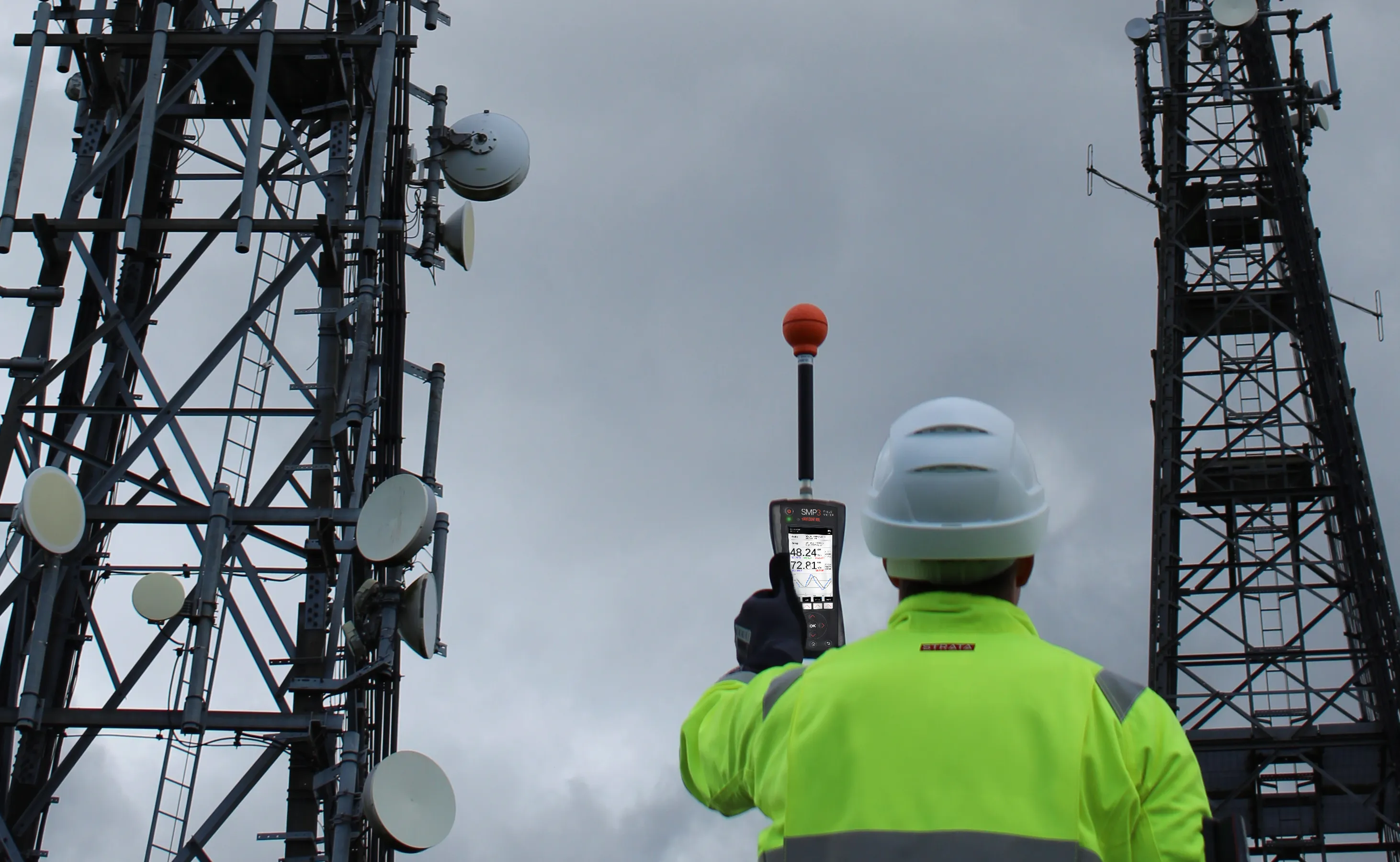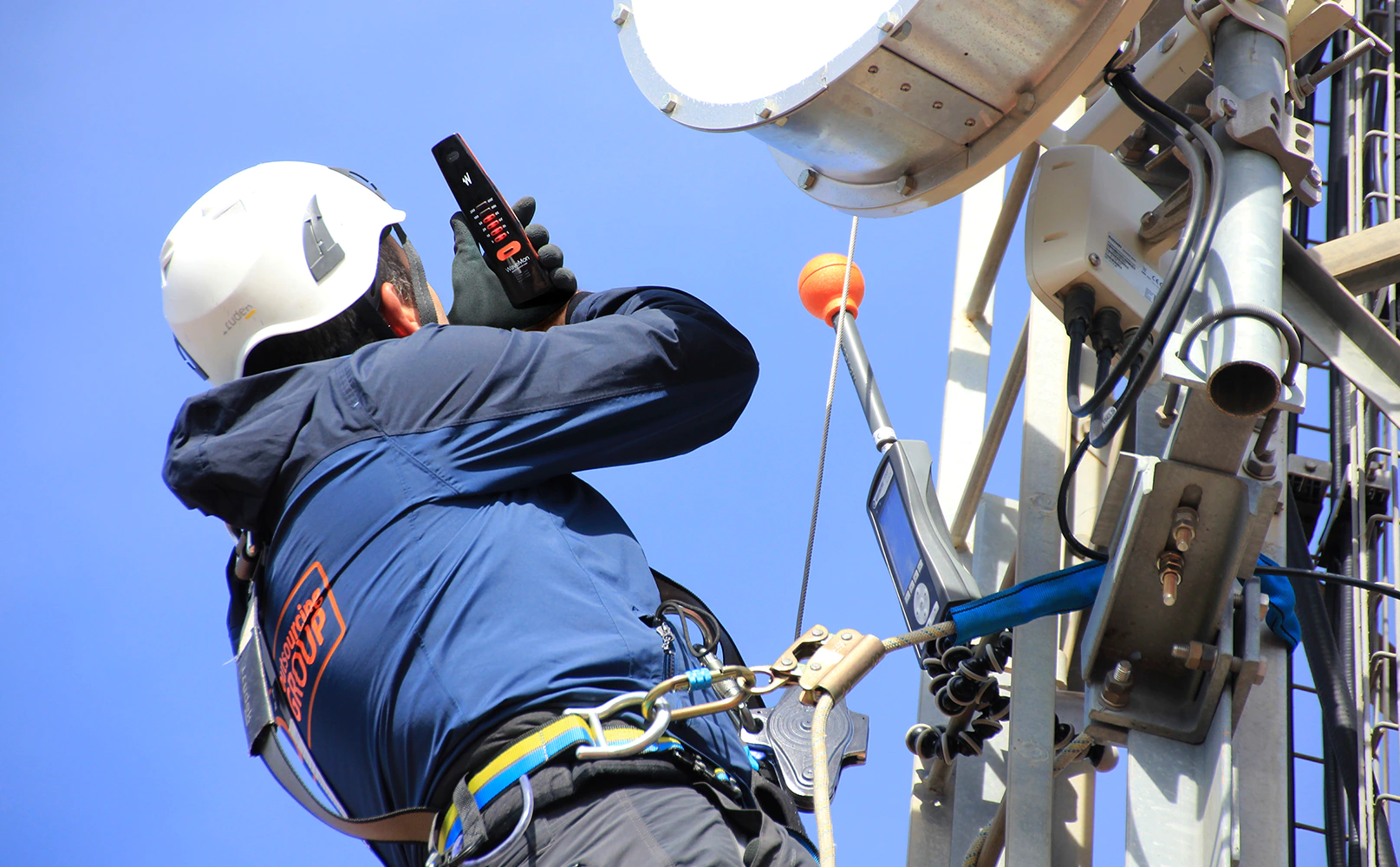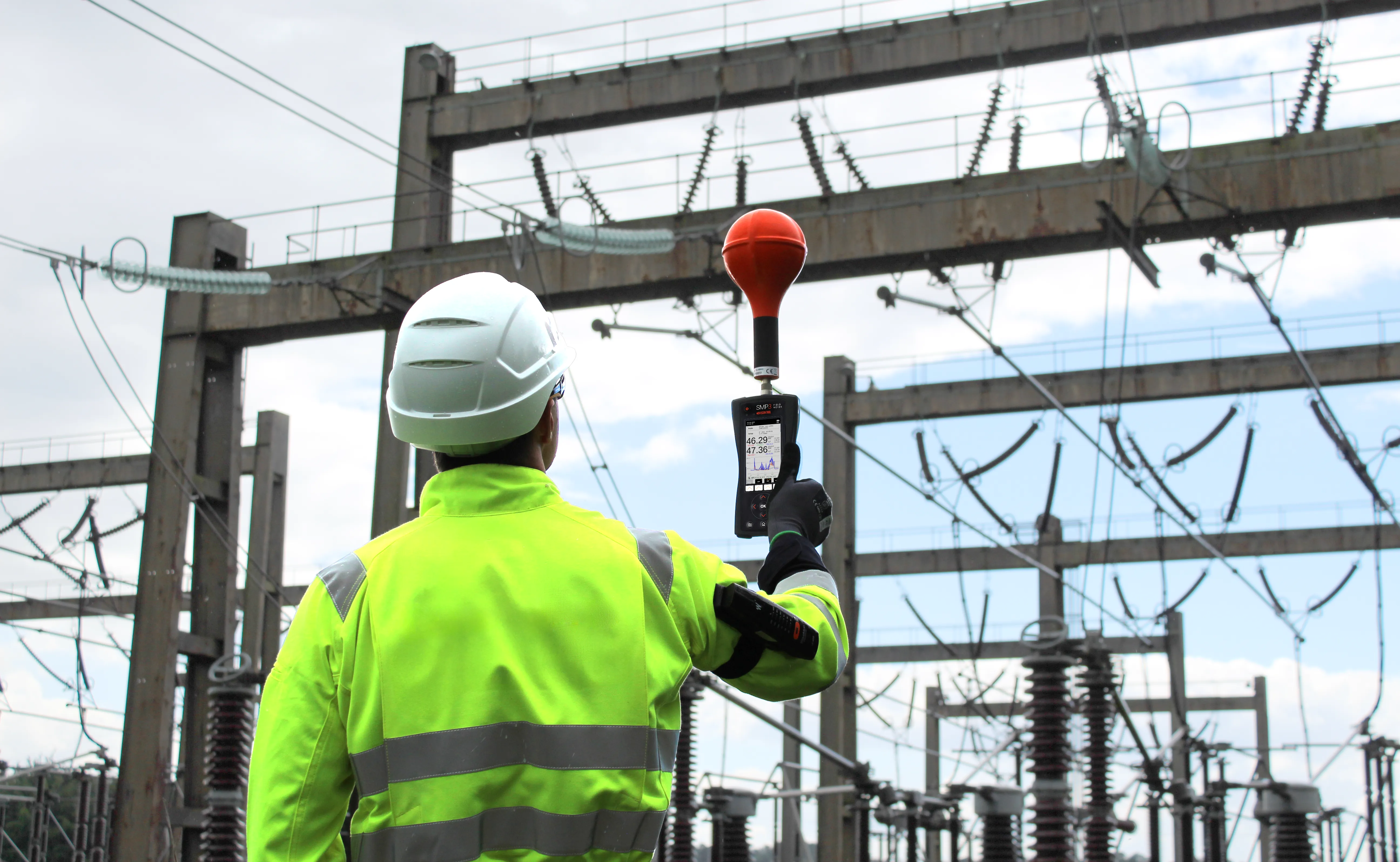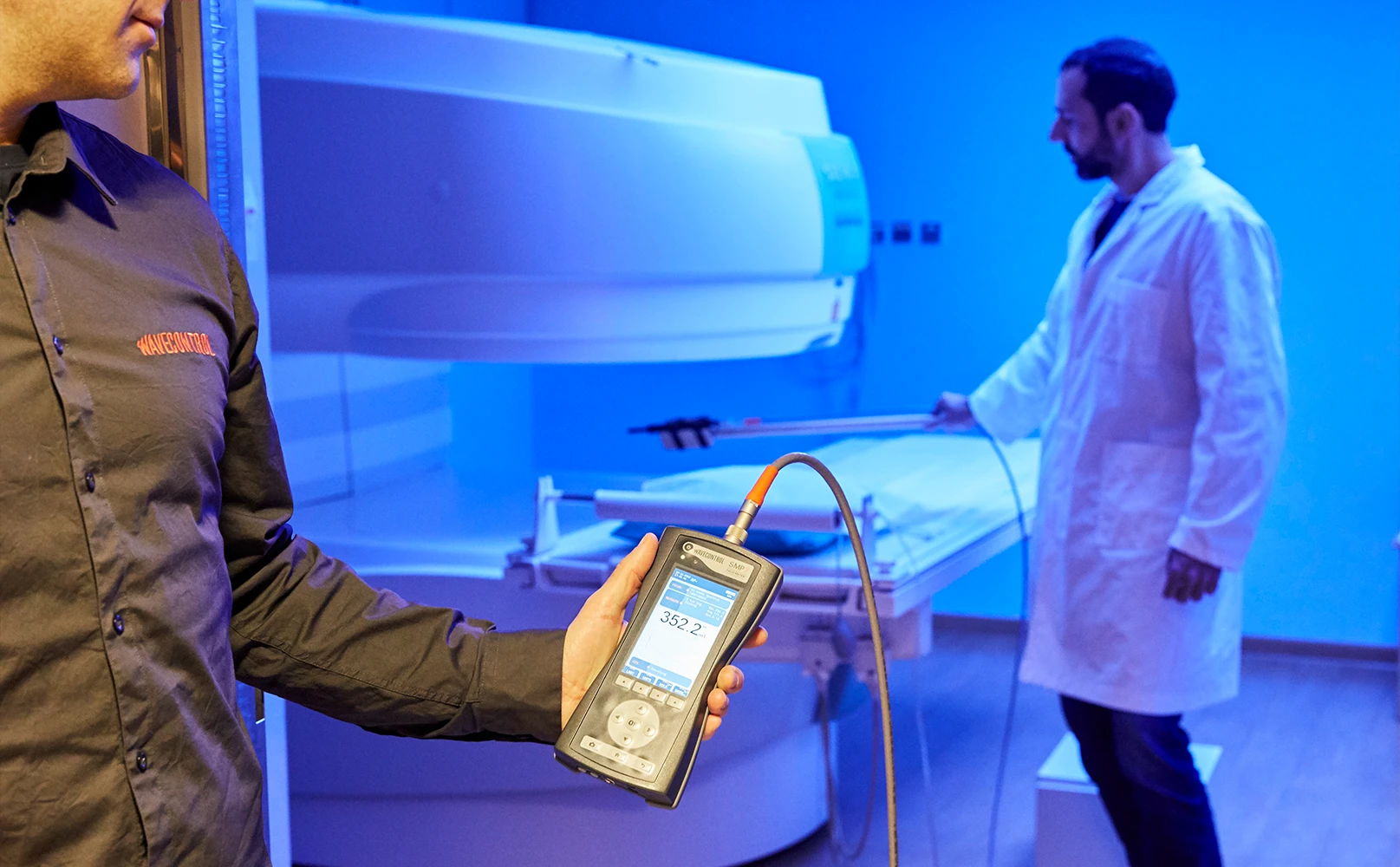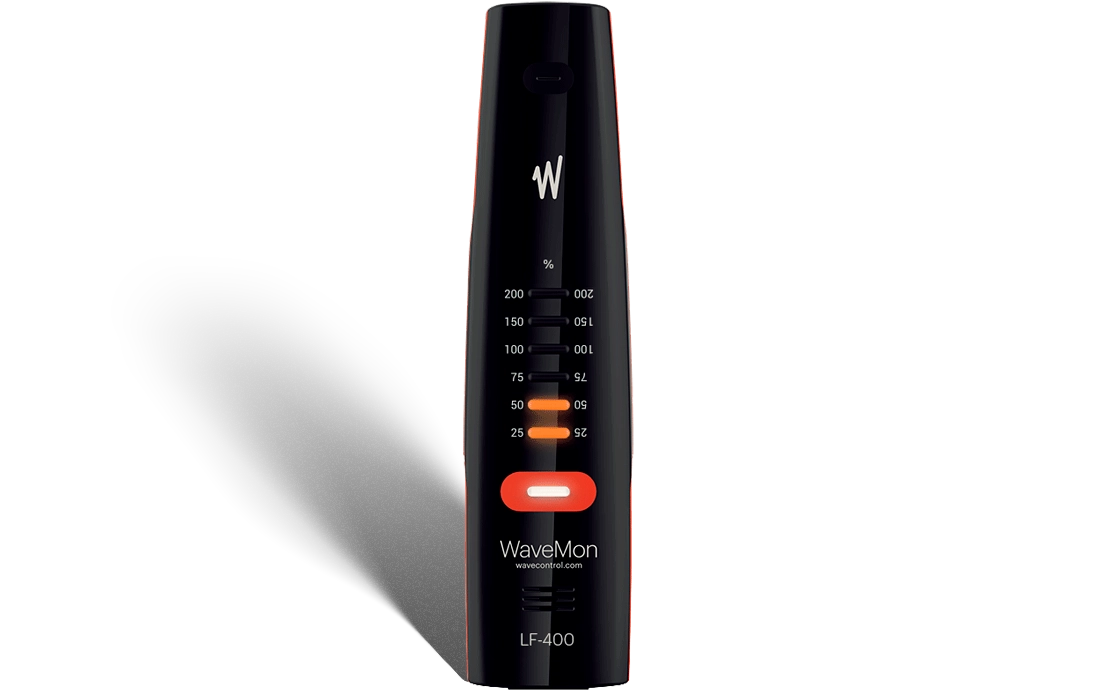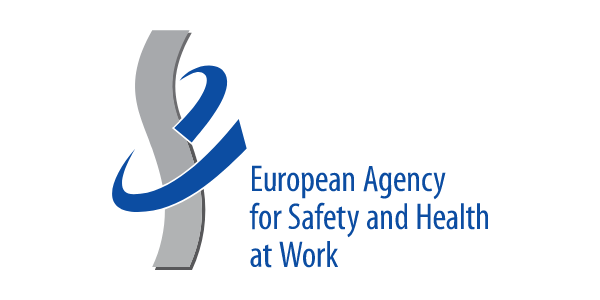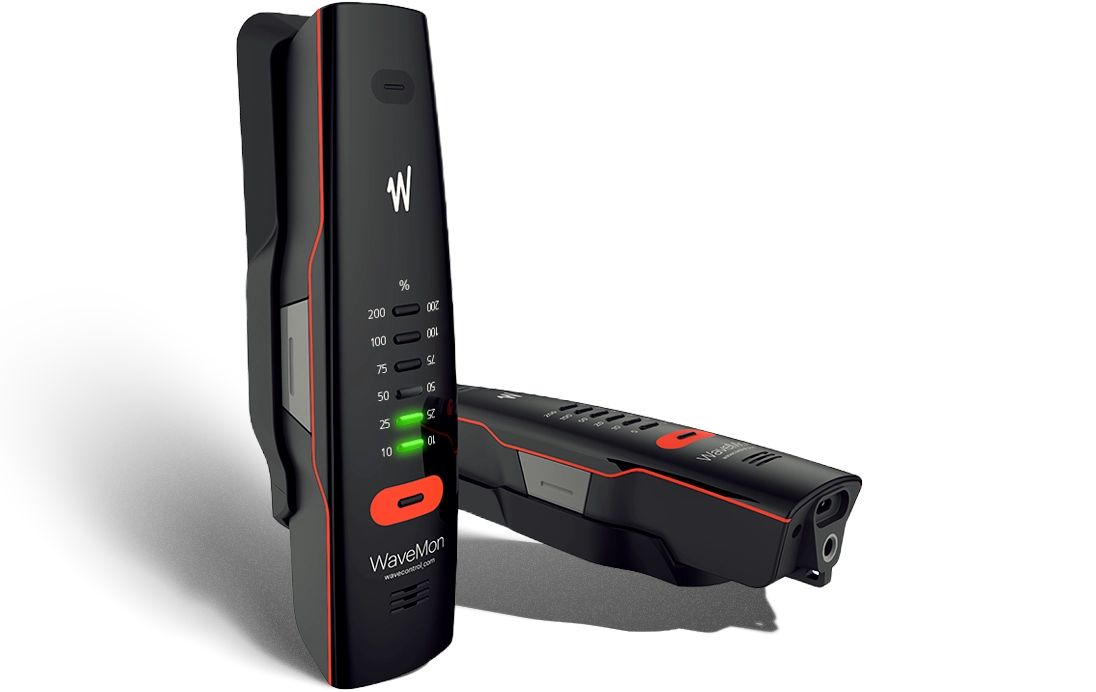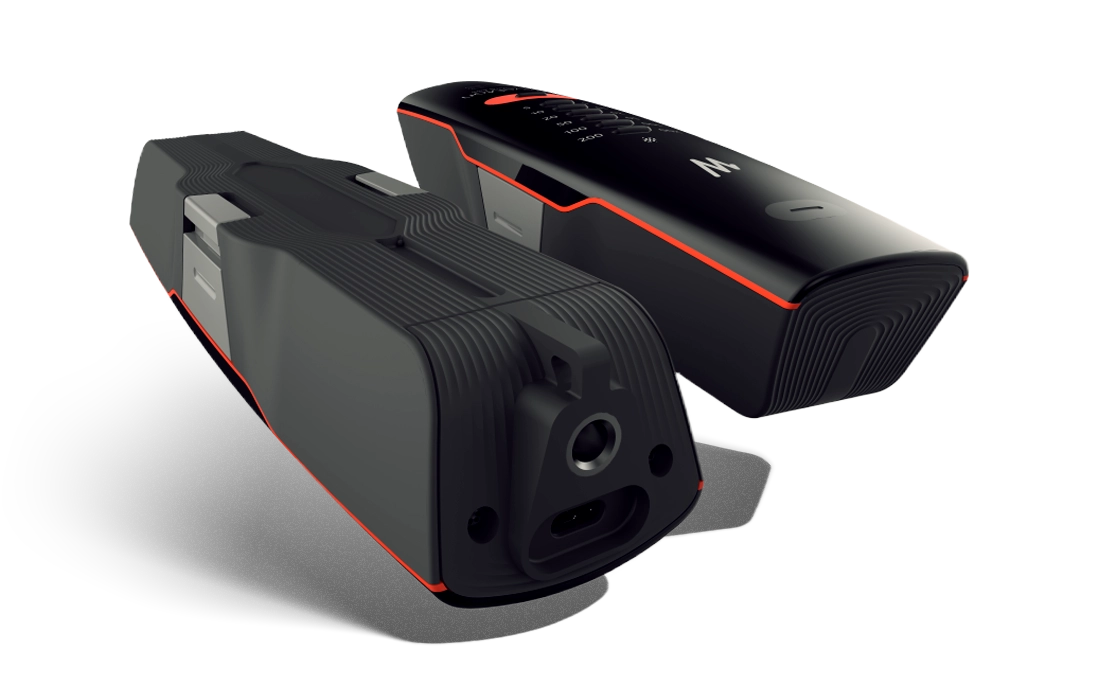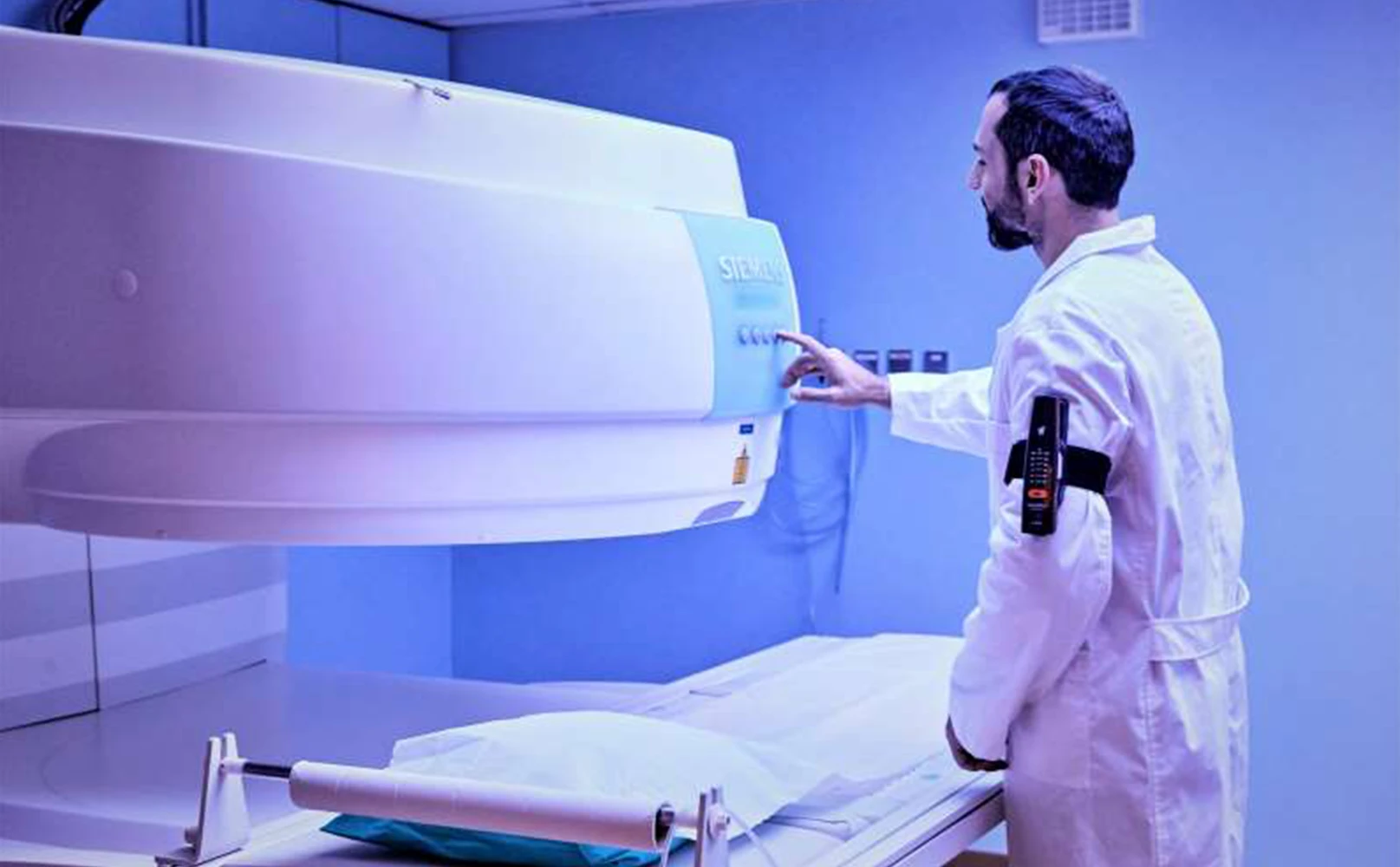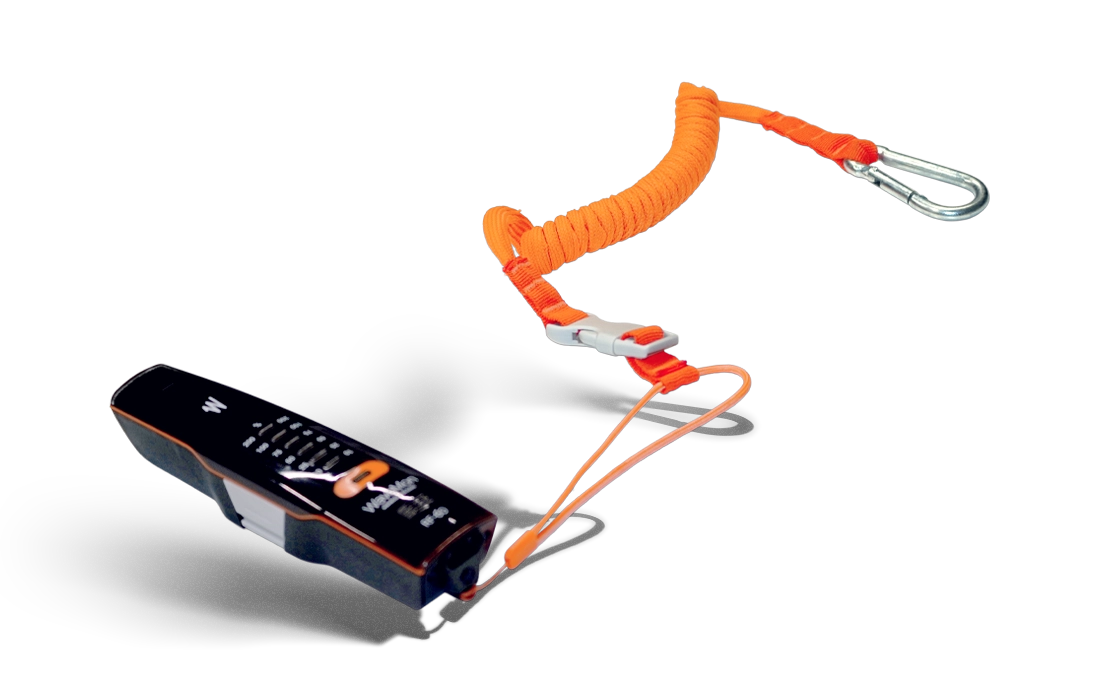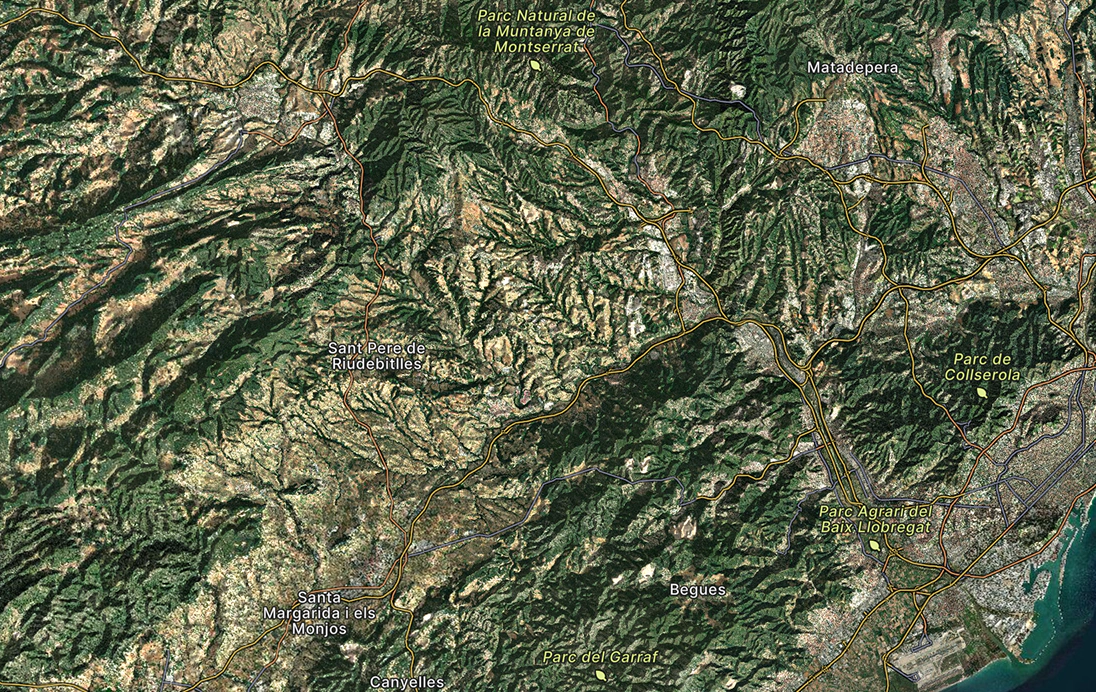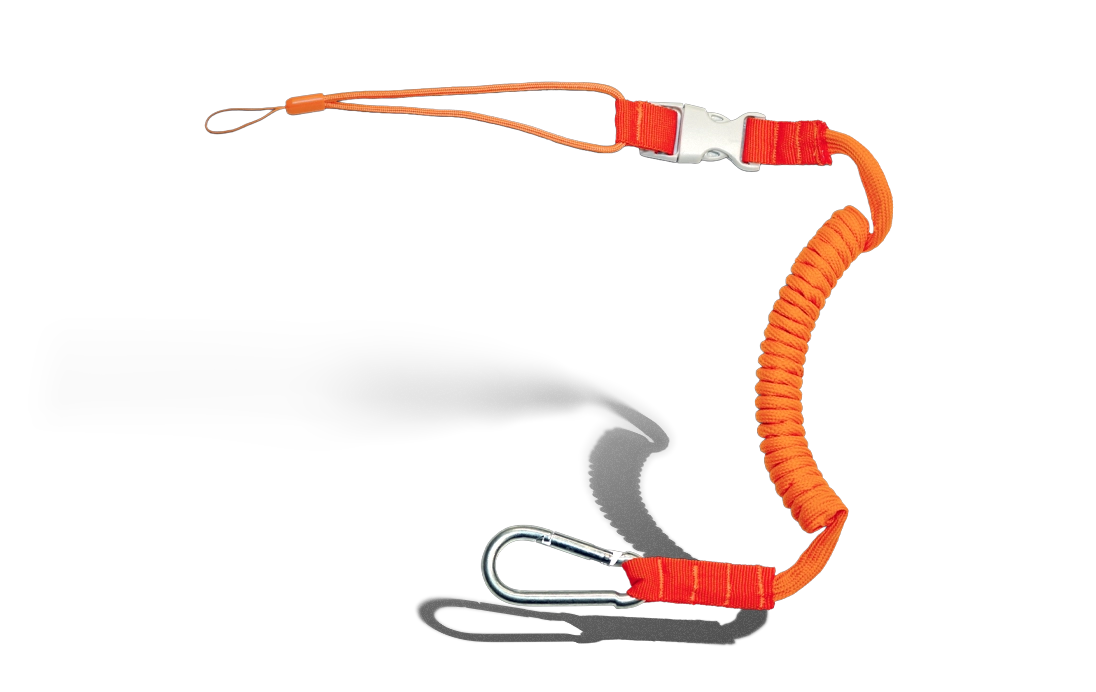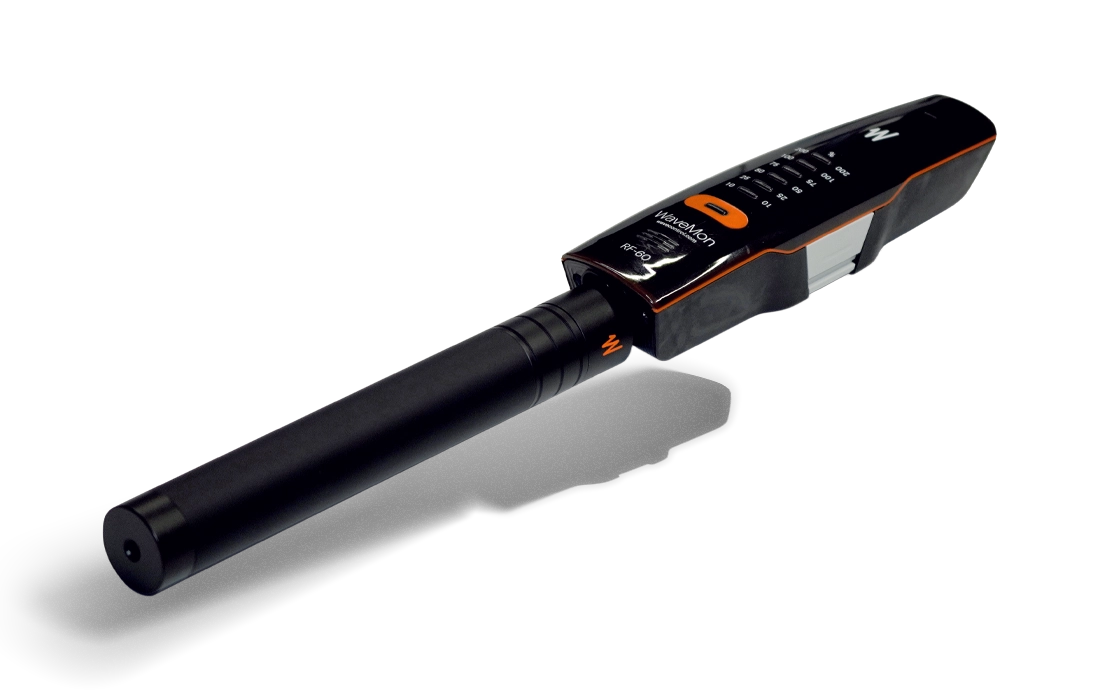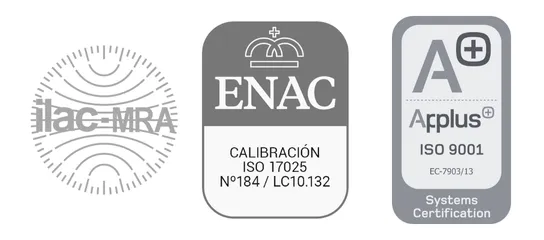Descripción
Explore Nuestro Monitoreo EMF
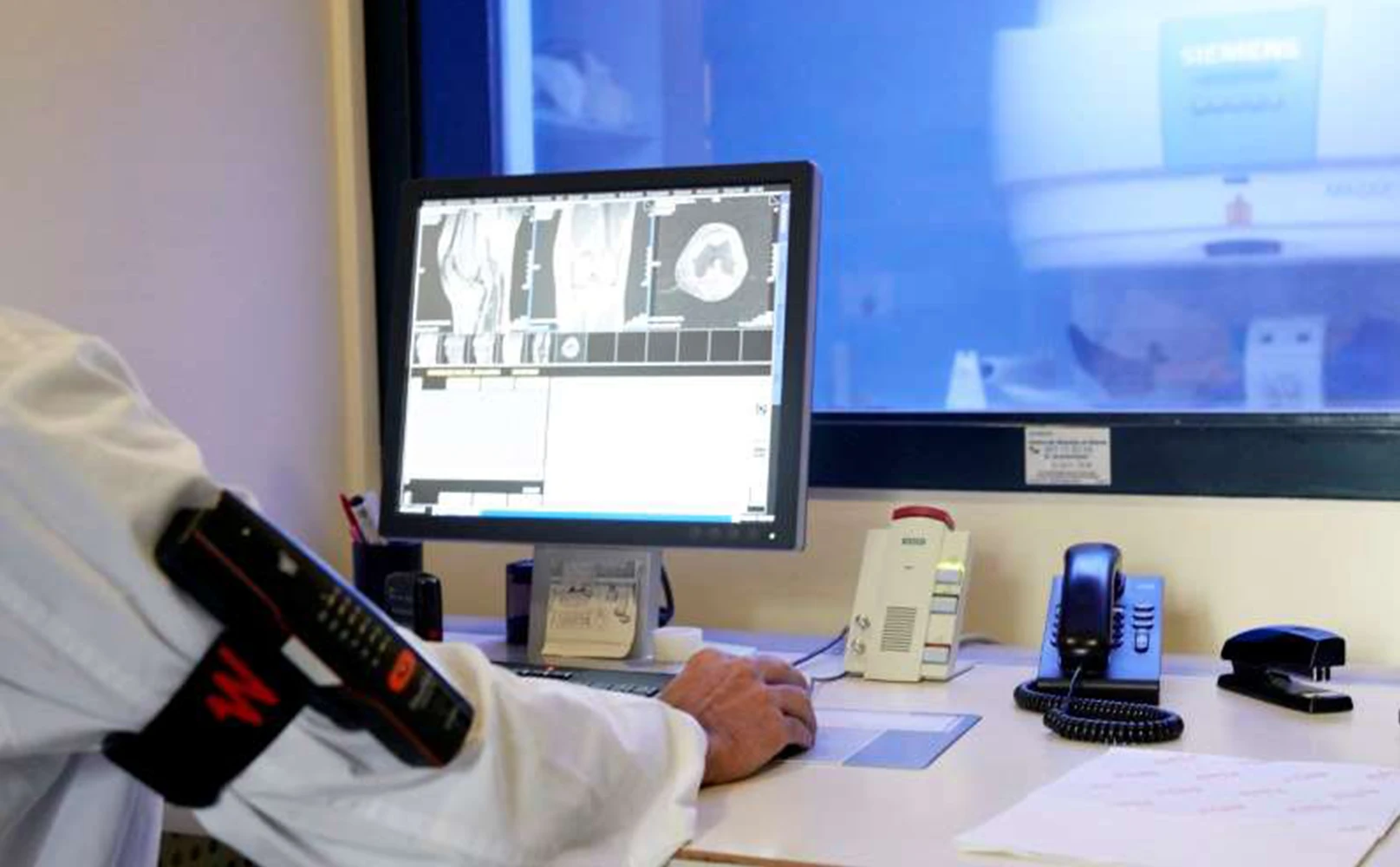
Conveniencia y Seguridad
Hemos creado un accesorio que le permite sujetar el monitor personal a su arnés, brazo o cinturón y así llevarlo en la mano para acercarlo a una fuente de radiación y luego volver a colocarlo fácilmente en su lugar.
También puede asegurarlo con un pequeño mosquetón para que no se caiga.

GPS y Altímetro
El WaveMon es el único monitor personal equipado con un GPS y Altímetro para la geolocalización de mediciones.
Por ejemplo, en una torre de alta tensión, el GPS proporcionará la posición geográfica de la torre y el Altímetro la altura relativa desde el suelo.
Aplicaciones de los dispositivos CEM de Wavecontrol

Automoción
Los conductores y pasajeros de vehículos están expuestos a campos magnéticos de baja frecuencia significativos emitidos por diferentes componentes eléctricos y electrónicos en estos vehículos. Con una mayor demanda de autos eléctricos para minimizar la contaminación y promover la descarbonización, existe un mayor riesgo de CEM que debe ser evaluado para asegurar que los usuarios del vehículo estén protegidos de la sobreexposición a CEM. Las organizaciones internacionales y los fabricantes de automóviles han desarrollado estándares para verificar que los vehículos automotores cumplan con las regulaciones de seguridad EMC nacionales e internacionales. Esta evaluación debe realizarse desde DC hasta 400 kHz. Algunos de los estándares que definen estos procedimientos para evaluar los campos magnéticos de baja frecuencia en vehículos incluyen IEC 62764, GB/T 37130, MBN 10284-2, PSA-MR02 B217110 y muchos otros.

Industria
La exposición de los trabajadores a campos electromagnéticos debe ser monitoreada para su seguridad en una amplia gama de áreas industriales, maquinaria y procesos de fabricación. Algunos ejemplos incluyen calentamiento por inducción, sistemas y procesos de soldadura, calentamiento por radiofrecuencia (RF), equipos de templado y secado, procesos químicos (electrólisis), etc. Los electrodomésticos también generan campos electromagnéticos que deben ser medidos y evaluados antes de que puedan salir al mercado. Los estándares de referencia aplicables incluyen: EN 50519 (calentamiento por inducción), IEC/EN 62822-1, IEC/EN 62822-2 e IEC/EN 62822-3 (soldadura), IEC 62233 (electrodomésticos), IEC 62493 (iluminación), EN 50527 (trabajadores con dispositivos médicos implantables activos), etc.

Energía
Los campos electromagnéticos de baja frecuencia están asociados principalmente con el suministro de electricidad, a través de la generación, distribución y uso de corriente alterna (AC), y siempre están presentes en nuestro entorno. La electricidad opera a una frecuencia de 50 Hz o 60 Hz, dependiendo del país. Las centrales eléctricas, las líneas de alta y media tensión, los transformadores, los motores eléctricos y las líneas ferroviarias son las principales fuentes de estos campos electromagnéticos. Los estándares de referencia aplicables incluyen: IEC/EN 62110 (sistemas de energía AC), IEC 61786-1 e IEC 61786-2 (medición de campos DC y AC de 1 Hz a 100 kHz).
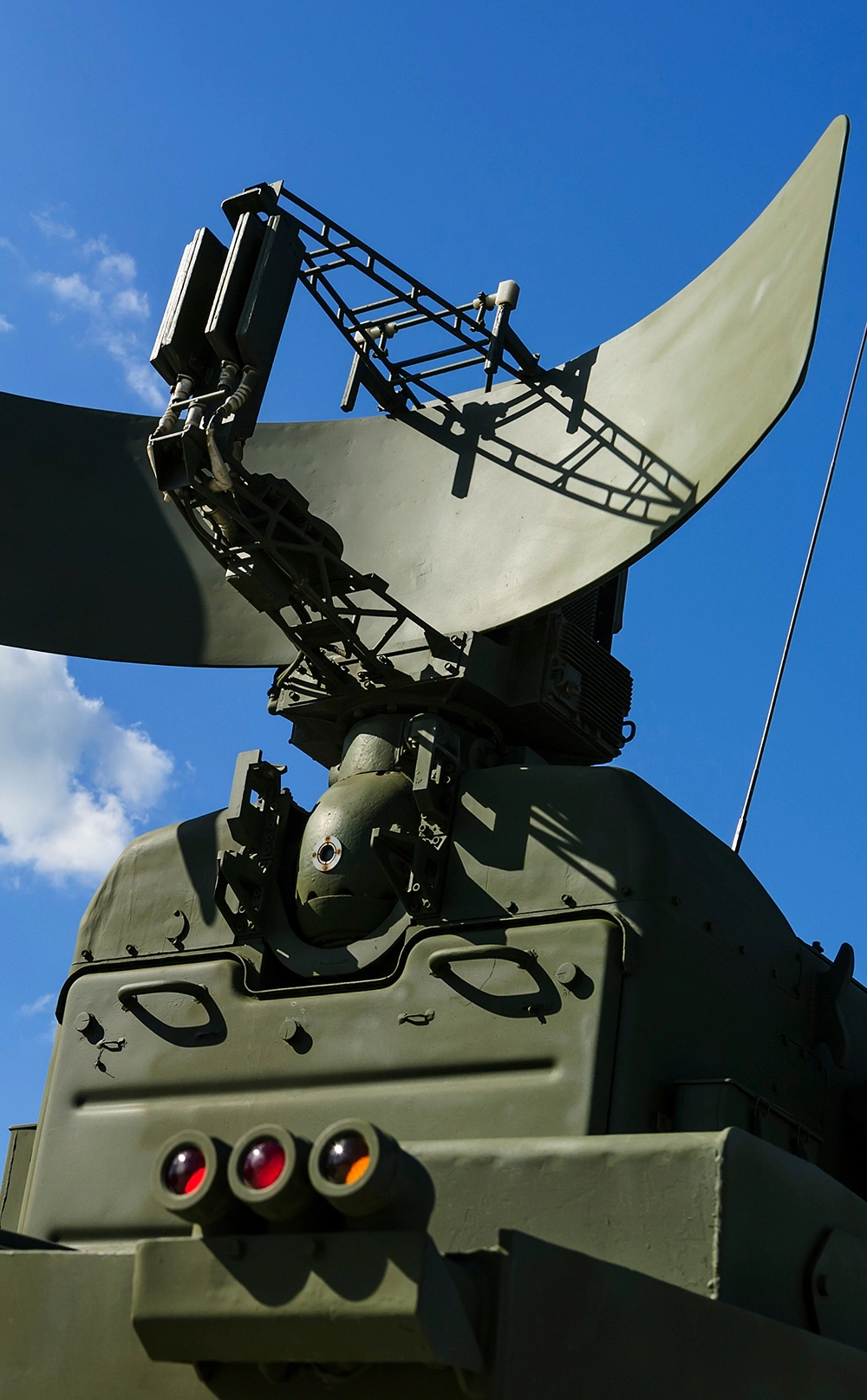
Radar Aeroespacial
Las principales fuentes de radiación electromagnética en el área de radar y el sector aeroespacial son las estaciones de radar, los equipos satelitales, los equipos de comunicación, etc. El SMP3 es particularmente adecuado gracias a su procesamiento digital de alta velocidad que asegura la capacidad de detectar picos de hasta 1 µs. También puede detectar picos aislados de muy alta amplitud gracias a una función especial de autoescalado que adapta el margen dinámico del dispositivo (amplificación) a los niveles necesarios. En el área de radar/aeroespacial podemos encontrar campos eléctricos y magnéticos de baja frecuencia, provenientes de equipos de comunicaciones que operan en varios kilohertz (kHz) hasta gigahertz (GHz). La combinación SMP3 + WP400 + WPF18 es ideal en este caso porque puede cubrir el rango de frecuencia de 1 Hz a 18 GHz con solo dos sondas.

Laboratorios I+D
Los laboratorios eléctricos/electrónicos normalmente utilizan equipos de radiofrecuencia y, por lo tanto, los niveles de radiaciones electromagnéticas pueden ser altos. Esto hace necesario asegurar la seguridad de los trabajadores en relación con la exposición a esos campos electromagnéticos. Para asegurar que no se excedan los niveles permitidos de exposición, los dispositivos ideales son los medidores de banda ancha que pueden medir la exposición total en el rango de frecuencia de trabajo del equipo utilizado. La solución ideal es el SMP3 + la sonda WPF que mejor se adapte al rango de frecuencia en cuestión. Wavecontrol también produce sistemas de medición continua con alarma incorporada, basados en los dispositivos MonitEM, diseñados para monitorear la exposición en este tipo de instalaciones.
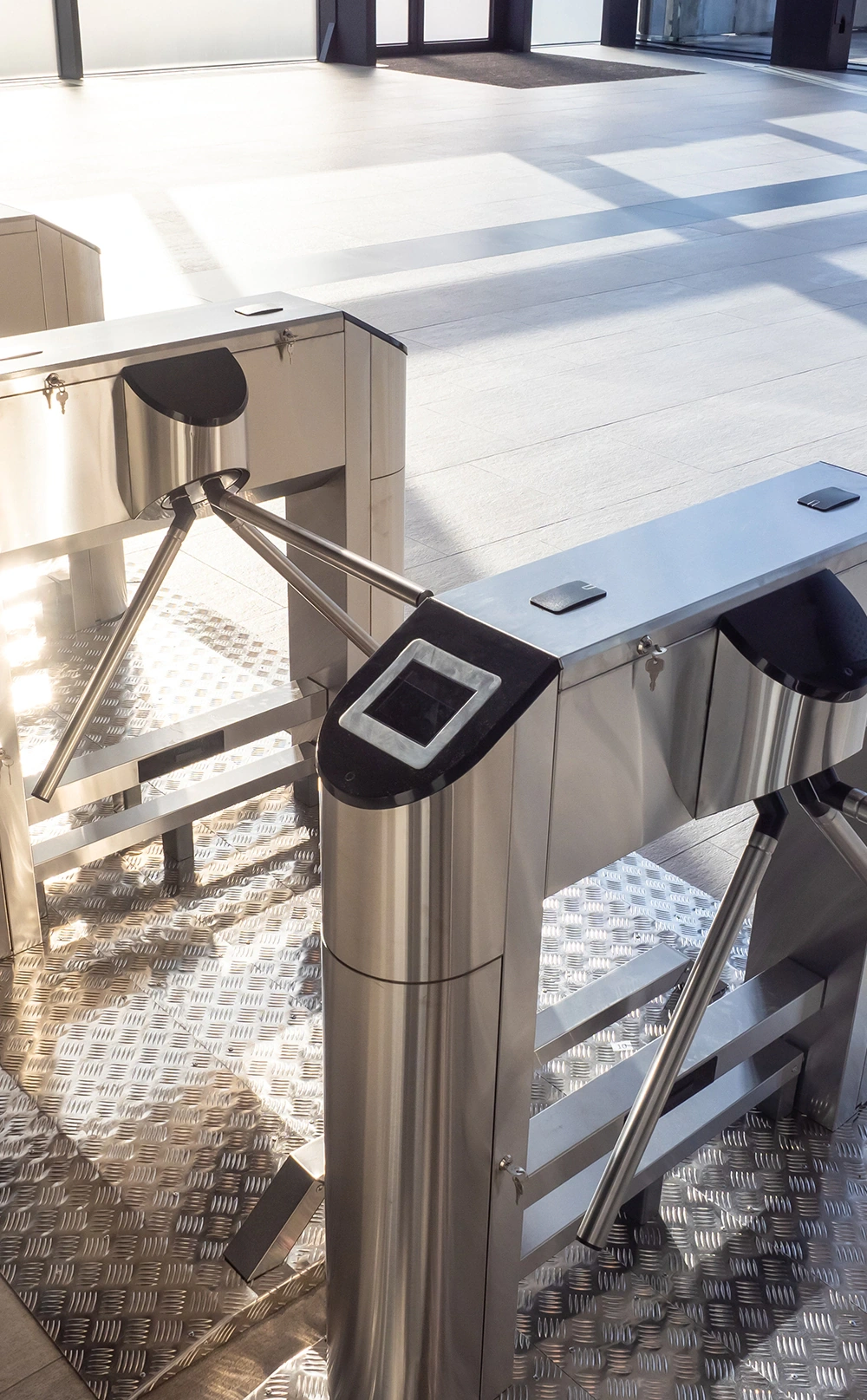
Detección de artículos y personas (RFID/EAS)
Los sistemas de identificación por radiofrecuencia (RFID) y vigilancia electrónica de artículos (EAS) se utilizan comúnmente en espacios públicos, generando campos eléctricos complejos. Las personas que trabajan en espacios cercanos a esos sistemas están expuestas más intensamente que las personas que pasan por ellos. La mayoría de esos sistemas operan en el rango de baja frecuencia. Las normas de referencia aplicables a la exposición a RFID/EAS son: EN 50364 e IEC/EN 62369-1.
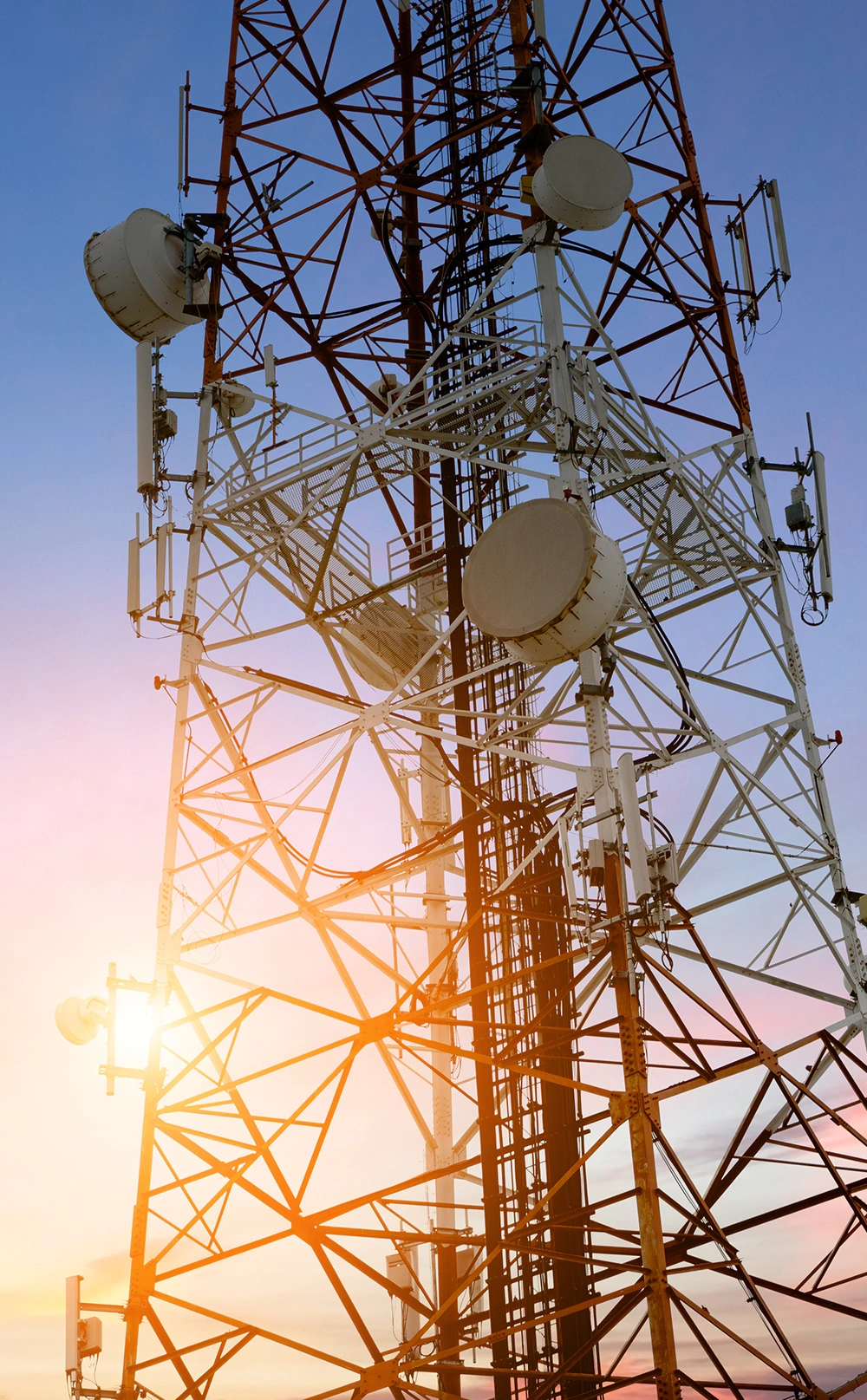
Telecomunicaciones
Los sistemas de telefonía móvil, los sistemas de radiodifusión y otros sistemas de comunicación son las principales fuentes de radiación electromagnética en esta área. Las mediciones a veces se realizan en condiciones de campo lejano, donde el uso de una sonda de campo E (eléctrico) será suficiente (por ejemplo, WPF8). Con transmisores de baja frecuencia, podemos encontrarnos en condiciones de campo cercano y, por lo tanto, también será necesario medir el campo H (magnético) (por ejemplo, WPH60). Es importante que el personal que accede a infraestructuras de telecomunicaciones o sube a torres con elementos radiantes, lo haga con equipo de protección personal como el monitor personal WaveMon, para evitar la sobreexposición. Algunos estándares de referencia internacionales son: IEC 62232 y EN 50492 (estaciones base), EN 50496, EN 50554, EN 50475 y EN 50476 (radiodifusión), EN 50400 y EN 50401 (equipos de radiocomunicación).
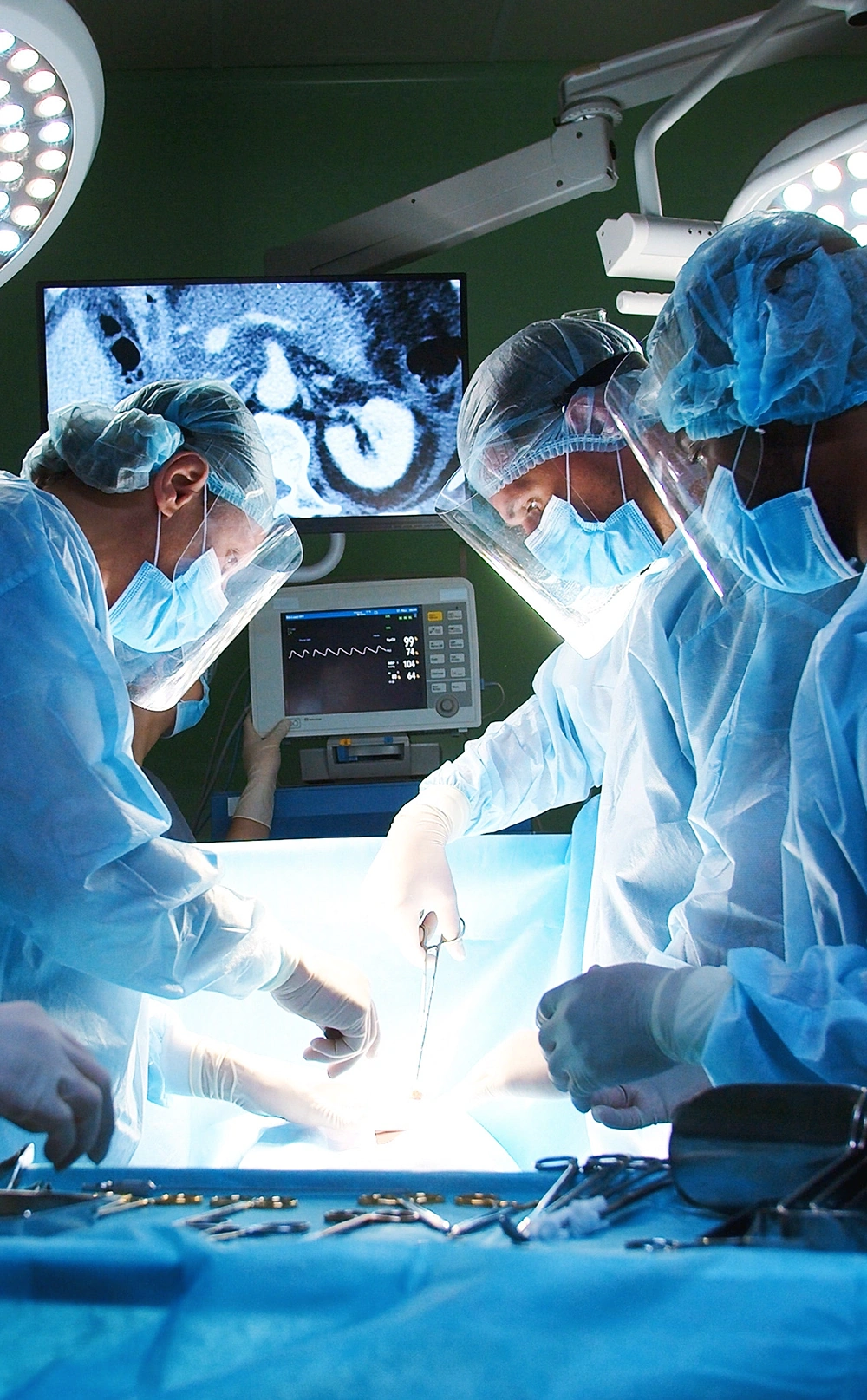
Electromedicina
Los equipos de resonancia magnética, los equipos de diatermia e hipertermia, y los equipos de electrocirugía son las principales fuentes de radiación electromagnética en la industria médica. El personal médico que utiliza ese equipo o trabaja en espacios cercanos está expuesto más intensamente que los pacientes o las personas que pasan por allí, por lo que la exposición dentro del radio de influencia de ese equipo debe ser evaluada y controlada. Esto incluye mediciones a bajas y altas frecuencias utilizando los dispositivos y sondas adecuados con respuesta isotrópica y RMS. La norma aplicable es IEC 60601.

Ferrocarril
La electricidad es muy importante en la industria ferroviaria, ya que permite que los trenes se muevan rápidamente, de manera silenciosa, cómoda y con poca contaminación. Se utiliza energía de alta potencia y baja frecuencia para mover los trenes y frecuencias de radio (RF) para la comunicación. La exposición de las personas a los campos electromagnéticos tanto dentro como fuera de los trenes, cerca de los sistemas de comunicación y en las estaciones debe ser controlada. La norma EN 50500 define los procedimientos para medir los niveles generados en la industria ferroviaria en relación con la exposición humana.
Directiva Europea 2013/35/UE
Protección para los trabajadores contra la exposición a campos electromagnéticos. Cumplimiento con las normas EN.
Código de Seguridad FCC/Osha 6
Regulaciones estadounidenses y canadienses para la exposición humana a campos electromagnéticos.
Normas IEC, EN, IEEE, ITU, ICNIRP
Normas y recomendaciones internacionales para la evaluación de la exposición electromagnética.
Características Principales del Wavemon LF-400
- Cumple con las normas internacionales de seguridad de campos electromagnéticos;
- Mediciones de campo H/B desde 0 Hz hasta 400 kHz;
- Sensores isotrópicos;
- Respuesta ponderada para comparación directa con el límite estándar;
- Alarmas configurables por el usuario;
- Alarmas audibles, visibles y de vibración de alta intensidad;
- Umbral de alarma personalizable;
- GPS y altímetro opcionales;
- Registrador de datos para informar y registrar datos;
- USB para conexión a PC para parametrizar y descargar datos;
- Pequeño y ligero;
- Alimentado por 2 baterías estándar desechables o recargables (a través del puerto USB).
